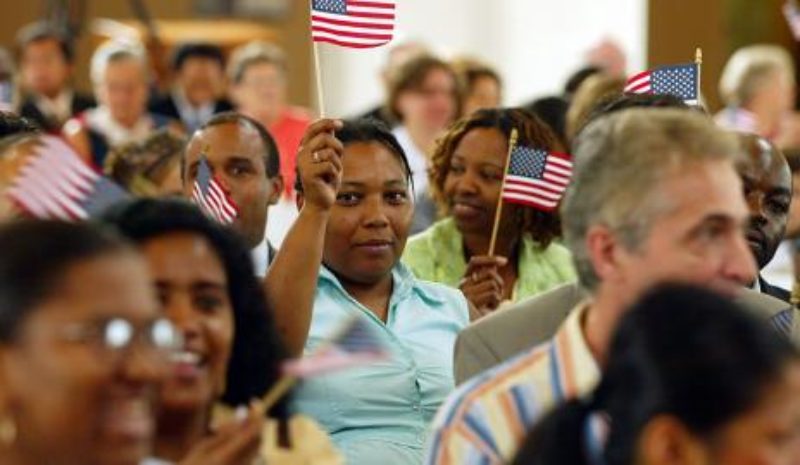For trans migrants forced to flee their homes, the violence continues at our border
A few months ago in Tijuana, Mexico, our Director of Research and Analysis for Refugee Protection Christina Asenico met two couples from Russia – three of the four individuals identified as transgender men.
In Russia they were targeted and persecuted for their identities. They watched as friends were arrested for their sexual orientation or gender identity and wondered if they would be next.
Christina met them on the Mexican side of the border as they waited for a chance to apply for asylum in the United States.
At any given time you will find hundreds of people waiting in makeshift camps and crowded shelters to receive a coveted Customs and Border Protection (CBP) One appointment, where they can be finally processed into the United States and may make a claim to asylum.
They can’t go home to Russia for fear of persecution, but the indefinite wait to receive an appointment is both maddening and dangerous. They are stuck in limbo.
Every year on March 31st, the world observes International Transgender Day of Visibility, a day to both celebrate the lives and contributions of transgender people while also drawing attention to the continued discrimination and violence the community faces across the globe.
Unfortunately, this violence is widespread. Across the world transgender people are four times more likely to be victims of violent crime, including rape and sexual assault, than cis-gendered people.
Persecution on the basis of sexual orientation is grounds to apply for asylum in the United States. But the reality is that for many transgender migrants, making it to the U.S. border doesn’t mean they are out of danger.
In Mexico, the homicide rate of transgender women is more than double that of cis-gendered women. According to the United Nations, the life expectancy of transgender women in Central America is only 35 years old.
This danger was front of mind for another asylum seeker that Christina met during her last trip to Tijuana. Originally from Honduras, she left her country after a violent attack and attempted sexual assault – targeted for her identity as a transgender woman. She has been waiting a total of ten months for a CBP One appointment, both at the U.S.-Mexico border and in southern Mexico.
While she waited, two of her LGBTQ+ friends who secured a CBP One appointment were kidnapped on the way to the U.S. port of entry. While in Mexico she has been harassed, discriminated against, and verbally abused for her identity. But she’s staying put, concerned that if she returns to Honduras she may be killed.
Many transgender migrants are in this same impossible predicament. And punitive deterrence policies like the Biden administration’s unlawful Asylum Ban, which forces vulnerable people to wait in Mexico for CBP One appointments, only make things worse.
LGBTQ+ and transgender asylum seekers are disproportionately at risk of sexual assault, trafficking, and other violent crime in Mexico. In a 2022 study on gender-based violence and asylum deterrence polices, one respondent claimed that 100 percent of their LGBTQ+ clients had faced sexual violence while waiting at the U.S.-Mexico border.
Lack of information about the repercussions of the Asylum Ban also means that many migrants face the threat of detention, where transgender migrants are at disproportionate risk of sexual violence and discrimination.
According to NPR, one transgender woman subject to U.S. immigration detention was detained with a group of men and was told “In the U.S., unless it’s cut off, you’re a man, and you go with the men.”
There are steps we can take to better protect transgender migrants. For starters, the Biden Administration must rescind the Asylum Ban and prioritize fair, human-centered solutions that don’t place the world’s most vulnerable populations in unnecessary danger.
The government spends over $1 billion on detention centers and Congress just drastically increased detention funding for this fiscal year. Instead of wasting taxpayer dollars on immigration detention centers where LGBTQ+ refugees are 97 times more likely to be sexually violated, our lawmakers should redistribute those funds to support more and equitable access to processing at our ports of entry (both with more CBP One appointments and for those unable to obtain an appointment). More funding is also urgently needed to support the humanitarian providers that welcome and assist those arriving in our country.
The people that Christina spoke with at the border represent many others who face discrimination, fear, uncertainty, and unfortunately violence, every day at our southern border. We have the capacity and resources to provide a safer, better life for transgender people, and that includes providing them a safe, rights-respecting pathway to protection.
